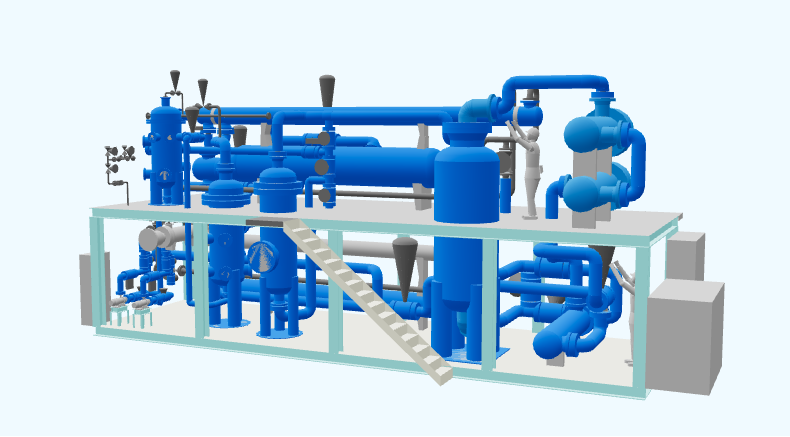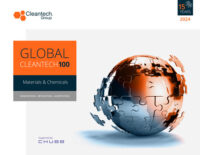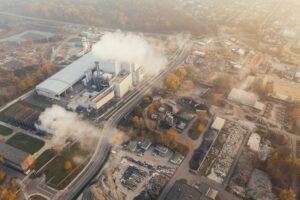Green Ammonia: What’s New?
It’s been over 2 years since we published our last piece on Ammonia, while interest in Ammonia remains strong, we expect even more demand for green ammonia generated by increasing natural gas prices and recent geopolitical events which may result in significant changes in the industry. Further, as the market continues to develop so have the innovators looking to address the challenges and opportunities in this space. Ammonia remains an important industrial chemical with around 200 million tons per year of production. Around 80% of the produced ammonia is used in chemical fertilizers (a market valued at over $100b) which sustain food production for billions of people.
Gaseous at room temperature, ammonia can be liquefied under low pressure or when cooled. As previously discussed, the properties of ammonia makes it an attractive potential energy carrier (long-distance) and transportation fuel. One of the main potential future markets is the shipping industry which is responsible for around 2.5% of the world’s total CO2 emissions. The International Maritime Organisation (IMO), which creates policy for its 173 member states, adopted a GHG strategy targeting carbon intensity reduction per transport activity by 40% in 2030 and by 70% in 2050, compared to 2008. Although electrochemical storage solutions have gained some traction, low carbon fuels remain predominant in most projections, with ammonia one of the leading future fuels alongside methanol, hydrogen, and others.
Ammonia is conventionally produced using the Haber Bosch process which requires nitrogen and hydrogen inputs. Historically nearly all the required hydrogen has been produced from the steam reforming of natural gas, or gasification of coal. Nitrogen is derived from an air separation process. Current ammonia production results in approximately 2% of global emissions. Producers are increasingly coming under shareholder and customer pressure to address these emissions. Policies such as the EU Emissions Trading Scheme and proposed Carbon Border Adjustment Mechanism (CBAM) are likely to add further pressure as carbon prices increase, ETS free allowances are removed, and ammonia imported into the EU may attract a fee depending on its carbon intensity.
Large scale low-carbon and green ammonia
The main approach to lowering the carbon intensity of ammonia production is through alternative hydrogen production. This includes hydrogen production with carbon capture (‘blue’), hydrogen from methane pyrolysis (‘turquoise’), and hydrogen generated by electrolysis (green). These approaches typically induce additional cost.
Commercial-scale low-carbon blue ammonia production exists today. For example, Nutrien has around 1 million tonnes per annum of capacity. There are also a number of planned projects such as the 1 million tonne per annum Barents Blue project in Norway which is preparing for FEED studies in advance of a final investment decision. Blue ammonia production is most competitive in regions with lower natural gas prices and developed infrastructure for CO2 transport and storage. In many cases, retrofit of carbon capture is possible which enables leveraging of current infrastructure. However, critics argue that this approach prolongs fossil fuel production, still results in 5-15% of CO2 emissions during the capture process, and continues to cause emissions during natural gas production.
Methane pyrolysis also leverages natural gas feedstock to generate hydrogen. Methane pyrolysis innovators have attracted significant funding in recent months, including a $1 billion DOE loan granted to Monolith Materials to upgrade Monolith’s Olive Creek Facility to enable production of 275 thousand tonnes of clean ammonia from 2025. Because the produced carbon during the methane pyrolysis process is solid, this approach can help avoid fugitive emissions in carbon capture, though emissions in natural gas production remain.
An alternative approach uses renewable energy to generate hydrogen via electrolysis. There are numerous projects planned, including several 10+ million tonnes per annum hubs planned by Intercontinental Energy. The approach is better suited to areas with large renewable energy generation potential and less attractive options for export of energy, such as Western Australia. It looks increasingly attractive when natural gas prices are high. Despite the growing interest, green ammonia is not without challenges. The capital requirements for large scale projects are significant and the extent of market demand for ammonia in new markets (beyond fertilizer) remains unclear which could impact investment decisions. The 20 million tonne per annum Western Green Energy Hub in Australia is expected to cost more than $70 billion with the investment decisions expected as late as 2028.
Innovation in ammonia synthesis
The Haber Bosch process used for ammonia synthesis requires high temperate and pressure. This results in demanding (and costly) equipment requirements and means that the process is poorly suited to cyclic operation required to match renewable energy supply. Mixed renewable energy supply and/or hydrogen storage is considered to address intermittent production curves of renewables, while Seaborg and others are investigating ammonia production using nuclear energy.
A growing number of innovators are developing new technologies with a focus on the ammonia synthesis. We spoke with Frank Natali of Liquium, who has developed a cost-effective technology to create ammonia at low temperatures and in normal atmospheric conditions, significantly reducing carbon emission. Frank explained that the technology can help address emissions of the current ammonia market in fertilizer and a growing future market in fuels. A key selling point for the technology is that it allows for the possibility of small ammonia plants which can reduce transportation and storage costs. Liquium plans to pilot technology in the existing fertilizer market by 2025, and sell small, decentralized plants by 2030 before addressing the market for large scale plants. Only founded in 2021, Liquium is currently raising a seed funding round to support development.
Another innovator, Tsubame BHB is developing catalyst technology which can operate at low pressure – suitable for the use of electrolytic hydrogen generated at normal pressure. We spoke with Tomoyuki Koide who explained how “the technology is relevant at smaller scale because the lower pressure requirements avoid the need for expensive materials used in the conventional ammonia synthesis process”. Further, lower temperatures enable higher conversion rate in ammonia synthesis. Investors include Ajimoto which uses ammonia to produce amino acids, and NYK which is developing ammonia ready shipping vessels. Tsubame operates a smalls scale pilot and has plans to sell modular plants (and catalysts), with operation starting in 2024. Tsubame announced a $3.6 million funding round in June 2021 to introduce technologies on-site and conduct R&D on mass production of next-generation catalysts.

The past year has seen a multitude of announcements from ammonia innovators, mostly targeting new catalyst technologies and decentralised ammonia production.
- Jupiter Ionics raised $1.8 million from Tenacious Ventures and is collaborating in a project to deploy pilot-scale units that manufacture green ammonia and ammonia-based fertilisers on farms.
- Nitricity raised $5 million from Energy Impact Partners, Fine Structure Ventures, Lowercarbon Capital and MCJ Collective to accelerate innovations to produce renewable nitrogen fertilizer at point-of-use.
- Starfire Energy raised an undisclosed amount from New Energy Technologies, Chevron Technology Ventures, Osaka Gas USA, and Mitsubishi Heavy Industries in April 2021 to advance commercialisation of catalysis technology for the synthesis and cracking of carbon-free ammonia.
- Atmonia partnered with Fujitsu to research catalysts for clean ammonia production leveraging material informatics.
Keep an eye on
Despite the recent traction in the market, the successful scale up of new ammonia technologies will likely be influenced by several factors. In the current markets, fertilizer remains a key target and demand for efficient food production is strong. However, ammonia-based fertilizers could face competition from solutions such as those under development by Kula Bio, Enko Chem, N2-applied and others.
Demand for ammonia as transportation fuel is somewhat dependent on the deployment of ammonia-ready engines and/or shipping vessels such as those under development by Amazon/Amogy and Man Energy Solutions, and the successful implementation of greens shipping corridors which enable bunkering for ammonia fuels such as those between the ports of LA and Shanghai, or those proposed in Australia and Chile.
Finally, the application of ammonia as an energy carrier for long-distance export may compete with methanol (also relevant as a chemical intermediate) or liquid hydrogen carriers systems such as those produced by Hydrogenious. If the intent is to use hydrogen, e.g. DRI-EAF steelmaking, or in fuel cells, then effective cracking technologies such as those under development by Starfire Energy will grow in importance.



